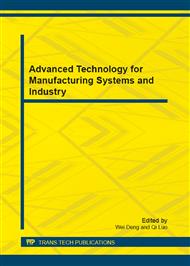p.1106
p.1116
p.1122
p.1128
p.1133
p.1139
p.1145
p.1152
p.1156
An Improved Algorithm of Spectrum Access in OSA
Abstract:
We present a distributed spectrum sensing and access algorithm applied in opportunistic spectrum access (OSA) networks. It is proposed in the condition of cognitive radio (CR) users’ correct spectrum sensing. In each slot, a CR user will decide whether to sense, which channel to sense, and whether to access. However, due to the hardware and energy constraints, the CR users may not be able to sense or monitor all the channels, so we design this access algorithm derived from the theory of Partially Observable Markov Decision Process (POMDP). To simplify the analysis, we assume that the CR users will sense and access only one channel. Simulation results show that the proposed access algorithm can greatly improve the throughput of CR users than the random access algorithm. It has good access performance, and can quickly achieve stable access throughput as well. It is shown that with greater channel transition probability difference the CR users will obtain higher access throughput, and when the difference equals to zero this access algorithm becomes random access algorithm.
Info:
Periodical:
Pages:
1133-1138
Citation:
Online since:
November 2012
Authors:
Keywords:
Price:
Сopyright:
© 2012 Trans Tech Publications Ltd. All Rights Reserved
Share:
Citation:


